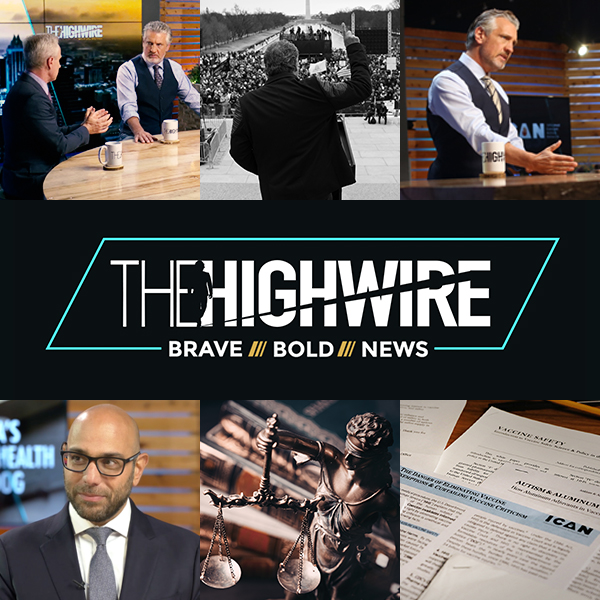In Their Own Words: Big Pharma During the Opioid Epidemic
Updated
Attempts at justice for the long list of those who caused, directed and amplified the opioid epidemic is unfolding across America. The public is getting an education on who the many pharmaceutical companies, distributors, opium growers and individuals are who have created the deadly wave which has ruined countless lives.
Despite facing stiff opposition by both drug companies and the DEA, a three-judge panel of the U.S. Court of Appeals for the 6th Circuit in Ohio ordered internal communications and a DEA database tracking opioid sales, known as the Automation of Reports and Consolidated Orders System, or ARCOS be made public.
The Washington Post writes,
“By consolidating cases from around the nation, the Cleveland case, for the first time, provides specific information about how and in what quantity the drugs flowed around the country, from manufacturers and distributors to pharmacies. The case also brings to light internal documents and deliberations by the companies as they sought to promote their products and contend with enforcement efforts by the DEA.”
From the ARCOS database, we now know that companies distributed 8.4 billion hydrocodone and oxycodone pills to commercial pharmacies in 2006 and 12.6 billion in 2012. Over that seven-year period, 76 billion pills were distributed in all. During the same timeframe, prescription opioids contributed to more than 100,000 deaths in the U.S., according to the U.S. Centers for Disease Control and Prevention.
Purdue Pharma became perhaps the first pharmaceutical company to reap the public’s disgust.
Nearly every state has filed a lawsuit, and most of them have focused on Purdue and members of the Sackler family, who own the Stamford, Connecticut-based company.
Court discovery emails from 2001 were prompted by an acquaintance of Sackler’s, who first sent him a note that read, “Abusers die, well that is the choice they made, I doubt a single one didn’t know of the risks.” Sackler replied, “Abusers aren’t victims; they are the victimizers.”
Deposition, which took place in March and is part of the multidistrict litigation, showed the former Purdue president was also compared to drug kingpin Pablo Escobar in an email.
CNN writes,
“Sackler received the email from a friend, an anesthesiologist, who said he had a friend whose daughter was approached with the drug at school in January 2002.
“Somebody tried to sell her OxyContin in the halls of the school. I asked her what she shows about — what she knew about OxyContin. I never discussed your company, et cetera, in her presence. Her reply: ‘It’s a designer drug, and sort of like heroin.’ I hate to say this, but you could become the Pablo Escobar of the new millennium.”
In 2007, Purdue Pharma pleaded guilty in a federal court and was forced to pay $600 million
for, among other things, failing to alert doctors that it was a stronger painkiller than morphine. Meanwhile Purdue correspondence from 1997, the year after it launched its blockbuster opioid OxyContin, showed that head of marketing and sales, Michael Friedman wrote to Sackler:
“It would be extremely dangerous at this early stage in the life of the product…to make physicians think the drug is stronger or equal to morphine…. We are well aware of the view held by many physicians that oxycodone [the active ingredient in OxyContin] is weaker than morphine. I do not plan to do anything about that.”
Beyond Purdue, other pharmaceutical companies are on the hook and being targeted with legal punishment.
In May, the founder and four former executives of Insys Therapeutics Inc. were convicted by a federal jury in Boston in connection with bribing medical practitioners to prescribe Subsys, a highly-addictive sublingual fentanyl spray intended for cancer patients experiencing breakthrough pain, and for defrauding Medicare and private insurance carriers. The company has since declared bankruptcy.
Johnson and Johnson is currently awaiting a judge’s landmark ruling for playing a key role in the opioid epidemic by serving as a ‘kingpin’ supplier of raw materials from its subsidiaries Noramco and Tasmanian Alkaloids. In addition, J&J’s pharmaceutical arm Janssen pushed its own opioid patch Duragesic to to over ‘Half-a-Billion Dollars in Sales’ by targeting top-prescribing doctors according to internal documents.
The world has watched America sink into the depths of a pharmaceutical company-directed opioid epidemic. The internal emails and data being continually released has confirmed what many have thought – that greedy industry has put profits over people even as a nation imploded.
The world now faces those same forces, marketing strategies and companies who are now hoping to expand the opioid market outside of American boarders. What will their response be?







